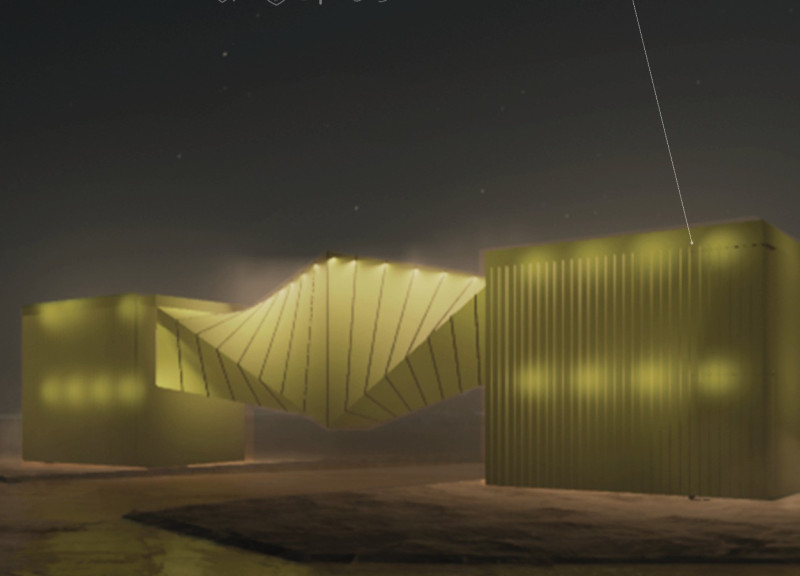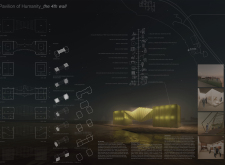5 key facts about this project
The Pavilion of Humanity: The 4th Wall is a project that aims to connect human innovation with the natural environment. Located nearby the Salton Sea, the pavilion addresses modern concerns such as technology’s impact on society, climate change, and the ongoing effects of the COVID-19 pandemic. Built with the idea of the "fourth wall" in mind, it symbolizes the separation between human achievements and nature, while also showcasing the interconnectedness of both.
Spatial Organization
The pavilion features two wings linked by a reflective bridge, each serving a specific purpose. Wing A includes areas for reception, conferences, and a café, alongside a gallery dedicated to prehistoric and ancient periods. It also contains Workshop A and a rooftop performance space that encourages creativity. Wing B focuses on the industrial and advanced technology periods, housing additional workshops and performance areas. This arrangement allows visitors to engage with the timeline of human advancement in a meaningful way.
Materiality and Environmental Integration
An important aspect of the pavilion is its façade, made from dalgae, a microscopic single-celled organism found in the Salton Sea. This innovative material is not just for appearance; it generates biofuel through photosynthesis and helps provide energy for the building. The use of this living organism highlights a sustainable approach to design, showing how architecture can contribute positively to its environment while addressing energy needs.
Visitor Engagement and Experience
Inside, the layout encourages interaction and participation, with flexible spaces designed for various activities. Performance and workshop areas promote creativity and collaboration, making the pavilion a lively environment. The thematic division of spaces enhances the visitor experience, inviting exploration and a deeper appreciation of technological progress. Pathways connect the different areas, facilitating movement and interaction among visitors.
The design includes a sculptural roof that reflects a winding path through time, inviting visitors to contemplate their own connections to history and innovation. Each detail of the pavilion works together to create a thoughtful space that honors the relationship between humanity and the environment.



















































